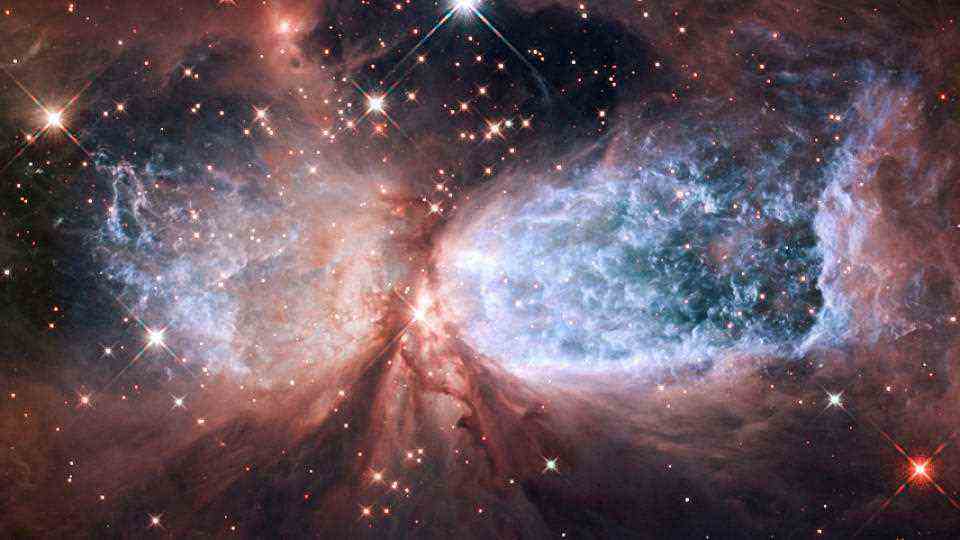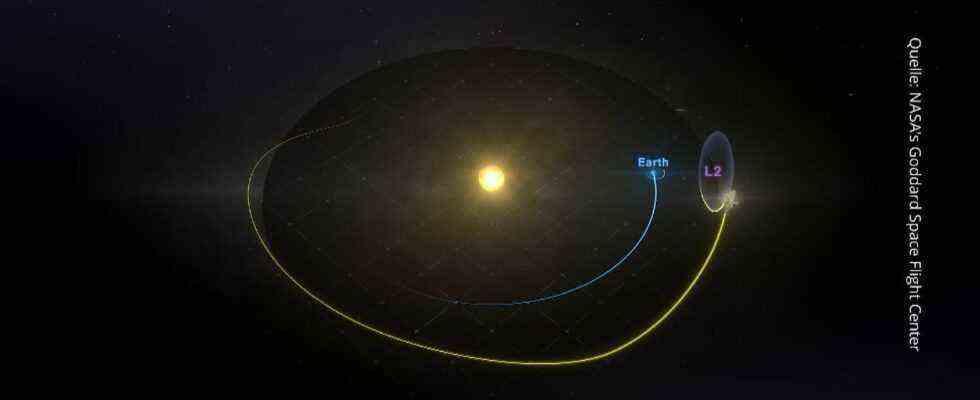RTL>news>
January 26, 2022 – 8:47 am Clock
by Karim Belbachir
The James Webb telescope has arrived at its target orbit at the Lagrange point L2. It means a milestone for science, especially since everything has worked without complications so far. Before we can start, however, something is missing.
James Webb Space Telescope 1.5 million kilometers from Earth
The James Webb Space Telescope unfolded without complications.
“Webb, welcome home!” said NASA Administrator Bill Nelson. “Congratulations to the team for all their hard work ensuring Webb’s safe arrival in L2. We’re one step closer to unveiling the mysteries of the universe. And I can’t wait to share Webb’s first new views of the universe this summer see!”
The James Webb Space Telescope (JWST) has reached its orbit around the Sun. This orbit is at the level of the Lagrange point L2. The Lagrange point is about 1.5 million kilometers from Earth. The scientists were accordingly happy that the telescope had unfolded without any problems. They were sure at the time of the repeatedly postponed Ariane 5 rocket launches not.
Look into the past of the universe

Images like the cosmic angel Sharpless 2-106 captured by the Space Telescope are spectacular. Spectacular images are still expected from the JWST.
At a distance of 1.5 million kilometers, it will not be possible to carry out repairs on the telescope for the next 20 years. 20 years is the time for which the fuel of the telescope lasts. This is needed for slight course corrections, which are necessary, for example, due to the solar radiation pressure acting on the parasol. Appointments for the use of the telescope by scientists worldwide within the “lifetime” are already fully booked. No wonder, after all, the telescope is expected to be able to take a look into the past of space. Light from already faded stars that has been around for 13 billion years is underway will be able to be captured by the mirror of the telescope. In addition, the space authorities hope to get a better look at exoplanets from other solar systems.
However, it will be another six months before that happens. That’s how much time NASA needs to calibrate all the equipment and align the telescope correctly. Bill Ochs, Webb Project Manager at NASA’s Goddard Space Flight Center: “We are now on the verge of aligning the mirrors, activating and commissioning the instruments, and beginning wondrous and amazing discoveries.”
Our weather trends and theme pages
If you are interested in further weather, Climate- and science topics have, you are in wetter.de in good hands. Specially recommend we can give you that too 7-day weather trend with the weather forecast for the coming week. This is updated daily. If you want to look further into the future, the 42-day weather trend an option. There we take a look at what’s in store for us in the coming weeks. Perhaps you are more interested in how the climate has behaved in recent months and what the forecast for the rest of the year looks like. That’s why we have ours Climate trend for Germany.
We recommend our wetter.de app so that you don’t miss any more weather when you’re on the go apple and androidEquipment.
The universe – the documentary in the online stream on RTL +
Streaming tip on RTL+: The universe
(kfb)

